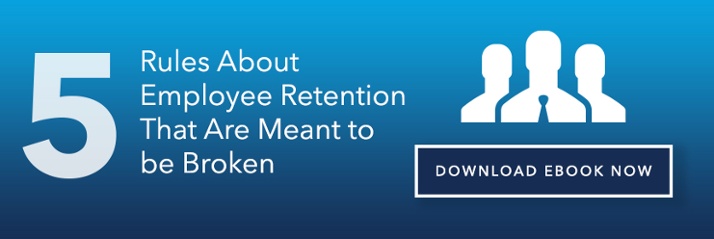
One of the best ways to offer retirement benefits is with a pooled employer plan (PEP), sometimes called a multi-participant 401(k). Before this option came about, organizations needed to be associated with each other or in a related industry if they wanted to set up a multi-employer plan (MEP).
Then, the Setting Every Community Up for Retirement Enhancement (SECURE) Act of 2019 led to the development of PEPs, eliminating the need for businesses to be related to form an MEP. Over time, PEP participation has grown steadily, largely because of the specific benefits of PEPs over single-employer plans (SEPs).
Learn more about the benefits and disadvantages of PEPs and find out how professional employer organizations (PEOs) can find you 401(k) cost-savings while taking on fiduciary responsibilities.
What Is a Pooled Employer Plan?
A pooled employer plan (PEP) is a type of retirement savings plan that allows multiple employers to offer their employees a single 401(k).
Because the same plan covers multiple businesses, the administrative costs are split between the companies, leading to cost savings. Also, unlike single-employer plans, PEPs remove the employer's administrative burden in managing retirement plans.
The audits and plan management are left to the PEP's pooled plan provider.
What Is a Pooled Plan Provider?
Pooled plan providers (P3s) are the ones responsible for managing PEPs. They may offer customized PEP options based on each employer's needs, including safe harbor provisions and vesting alternatives, among other custom features.
Different parties can serve as P3s, depending on the partnership that works best for you. Your designated provider might be an HR outsourcing company, mutual fund manager, broker, or any qualifying individual.
However, as will be explained, you're better off naming a professional employer organization as your P3 if you want to optimize savings while minimizing potential conflicts of interest.

How Is a Pooled Employer Plan Different from Other Multiple Employer Plans?
A PEP is a specific type of multiple employer plan (MEP). As mentioned, PEPs are somewhat different from other MEPs because of their requirements. Before the SECURE Act, multiple employer plans required all employers to be within the same or similar industry or be related to each other in other ways. PEPs offer more flexibility as defined-contribution MEPs.
What Are the Advantages of PEPs?
There are several pros to using PEPs, including:
Less Fiduciary Exposure
With PEPs, employers benefit from reduced fiduciary responsibilities when selecting and monitoring plan providers. P3s will help with the administrative and legal aspects of your retirement plans.
It’s essential to select a suitable P3 and plan for your organization. For instance, you should ensure your P3 will comply with the Employee Retirement Income Security Act (ERISA), which protects employees' retirement funds by preventing the misuse of retirement plans and their assets.
Reduced Administrative Costs
In addition to reducing fiduciary exposure, P3s and PEPs can help reduce various administrative costs. This is because the cost of a P3 auditing, bonding, and performing other tasks is split among the businesses in the PEP.
Tax Credits
If you need monetary assistance when setting a PEP, the government is here to help. Setting up a PEP makes you eligible for up to $5,000 in tax credits under the SECURE Act, which can go toward offering retirement plans. You may also receive $500 in tax credits for automatic enrollment, covering the first three years of implementing the plan.
SECURE Act 2.0 also offers other tax credits, including the employer contribution credit that covers a portion of the amount you contribute to your plan. This credit potentially pays as much as $1,000 per employee on the plan.
Access to Highly-Rated Institutional Shares of Investments
Through a PEP, you can also get hold of stocks with the highest institutional ownership, which you might not have access to with a single employer plan or other MEPs.
What Are the Drawbacks of PEPs?
There are certain potential disadvantages of PEPs to keep in mind. These include:
Potential Conflicts of Interest
There are a couple of ways PEPs might lead to conflicts of interest. The first is when P3s charge additional fees to take on other roles beyond the initial administrative role. For instance, P3s might hire themselves to manage the daily administration and operation of a plan for an added fee.
The second way a conflict of interest might develop is when a P3 lets a 3(38) Investment Manager handle investment management, leading to additional unwanted proprietary investment products.
Finally, the plan administrator, who is responsible for managing the PEP, may have a direct financial interest in the investment options offered within the plan. For example, the administrator may receive compensation from the investment companies for including their products in the plan, which could lead to the administrator selecting investments that are not in the best interest of plan participants.
Potential Targeting By the DOL
Some experts, namely ERISA attorneys, have speculated that the Department of Labor (DOL) may pursue PEPs because financial institutions can oversee themselves on these plans and because of the conflicts of interest that may arise from them.
Limited Plan Options
Because PEPs pool assets from multiple employers, the plan sponsor may offer only a limited number of investment options to participants. This can limit participants' ability to tailor their investment portfolios to their individual needs and risk tolerance.
You might not have as many options when selecting your plan compared to other plans. For instance, you may want to consider another plan structure if you want access to benefits for various job categories or branches.
How Do PEOs Minimize the Potential Cons of PEPs?
Consider turning to a professional employer organization (PEO) as your pooled plan provider to get the most from your PEP. You can outsource HR administrative tasks, from benefits administration to payroll, to PEOs, and provide employee benefits like group health insurance.
PEOs are ideal to use as a P3 because their primary duty is to serve as your HR outsourcing partner. They're more invested in your success than an independent investment manager would be. Because of this, unlike investment advisors and other financially-oriented P3s, PEOs don't offer any proprietary investment products that would otherwise allow for potential double-dealing.
Ultimately, a PEO can help you choose and implement a retirement plan that you and your employees will enjoy.




